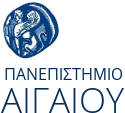Στα πλαίσια της διπλωματικής εργασίας μελετήθηκαν συνολικά δώδεκα ειδώλια – τμήματα ειδωλίων ελληνιστικής εποχής. Τα περισσότερα από αυτά (εννέα) προέρχονται από την μεγαλύτερη νεκρόπολη των Θηβών, το Βορειοανατολικό νεκροταφείο και την ανασκαφή η οποία ξεκίνησε το 1998 από την εταιρεία Ο.Σ.Ε στο πλαίσιο κατασκευής τούνελ. Το ΒΑ νεκροταφείο έχει συνεχή χρήση από τη υπομυκηναϊκή περίοδο μέχρι και τον πρώτο μεταχριστιανικό αιώνα. Μικρός αριθμός ειδωλίων (τρία) προέρχονται από ανασκαφές οι οποίες πραγματοποιήθηκαν στην ευρύτερη περιοχή του Σχηματαρίου.
Τα περισσότερα ειδώλια ήταν σε άριστη κατάσταση και οι χρωστικές ήταν πολύ καλά διατηρημένες. Η μεγάλη ευαισθησία όμως την οποία παρουσιάζουν τόσο τα υλικά τα οποία είναι κατασκευασμένα τα ειδώλια όσο και οι χρωστικές οι οποίες διακοσμούν το κάθε τέχνεργο δεν επιτρέπουν οποιαδήποτε δειγματοληψία. Για το λόγο αυτό επιλέχθηκαν οι μη καταστρεπτικές τεχνικές XRF και RAMAN προκειμένου να αναγνωριστούν οι χρωστικές οι οποίες χρησιμοποιήθηκαν στα ειδώλια που επιλέχθηκαν προς μελέτη.
Τα χρώματα τα οποία μελετήθηκαν ήταν, το κόκκινο, το μπλε, το μαύρο, το κίτρινο, το λευκό, το ροζ και το ιώδες και ταυτοποιήθηκαν οι εξής χρωστικές: Λευκό του Μολύβδου, Γύψος, Κιμωλία, λευκό των οστών, κόκκινο του Μολύβδου, Κόκκινη ώχρα, Αζουρίτης, Μπλε της Αιγύπτου, κίτρινο του Αρσενικού, μαύρο από κόκαλο και μαύρο Λιγνύς των λιχνιών.
In the framework of the diplomatic work, a total of twelve figurines - figurines of Hellenistic figurines were studied. Most of them (nine) come from the largest necropolis of Thebes, the Northeast Cemetery and the excavation that was launched in 1998 by the OSE company in the framework of a tunnel construction. The NE cemetery has continued use since the sub-Mycenaean period until the first post-Christian era. A small number of figurines (three) come from excavations that took place in the wider area of Schimatari.
Most figurines were in excellent condition and the pigments were very well preserved. However, the high sensitivity of both the figurines and the dyestuffs that each of the artists decorate does not allow any sampling. For this reason non-destructive techniques XRF and RAMAN were chosen to identify the pigments used in the figurines selected for study.
The colors studied were red, blue, black, yellow, white, pink and violet, and the following pigments were identified: Lead White, Gypsum, Chalk, Bone White, Red Lead, Red ocher, Azurite, Egyptian Blue, yellow of Arsenic, Ivory black and Lamb black.
 University of the Aegena
University of the Aegena
